
The High-frequency Active Auroral Research Program (HAARP) will create visible artificial airglow during a multi-university research campaign focused on ionospheric studies. The airglow could be observed up to 300 miles from the HAARP site in Alaska, with the best viewing chances when looking slightly to the side of the glow. (Artist’s concept)
Alaskans and visitors may have the opportunity to observe an artificial airglow in the sky, generated by the High-frequency Active Auroral Research Program (HAARP), during a research campaign beginning on Saturday (November 11th).
Scientists from the University of Alaska Fairbanks, Cornell University, University of Colorado Denver, University of Florida and Georgia Institute of Technology will conduct a variety of experiments at the UAF-operated research site.
Exploring the Ionosphere
The experiments will focus on the ionosphere, the region of the atmosphere between about 30 and 350 miles above the Earth’s surface.
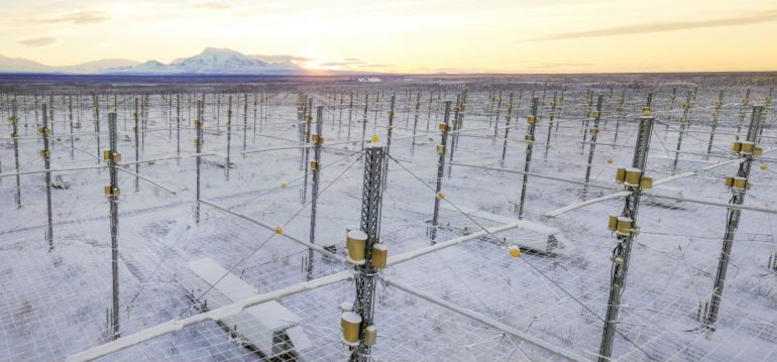
HAARP’s Ionospheric Research Instrument is a phased array of 180 high-frequency antennas spread across 33 acres. Credit: UAF/GI photo by JR Ancheta
Scientists will investigate ionosphere mechanisms that cause optical emissions. They’ll also try to understand whether certain plasma waves — gas so hot that electrons get knocked off atoms — amplify other very low-frequency waves. And they’ll investigate how satellites can use plasma waves in the ionosphere for collision detection and avoidance.
Observing the Airglow
Each day, the airglow could be visible up to 300 hundred miles from the HAARP facility in Gakona. The site lies about 200 miles northeast of Anchorage and 230 miles southeast of Fairbanks, or about 300 to 350 kilometers.
HAARP creates airglow by exciting electrons in Earth’s ionosphere, similar to how solar energy creates natural aurora, with on and off pulses of high-frequency radio transmissions. HAARP’s Ionospheric Research Instrument, a phased array of 180 high-frequency antennas spread across 33 acres, can radiate 3.6 megawatts into the upper atmosphere and ionosphere.
Visibility and Transmission Details
The airglow, if visible, will appear as a faint red or possibly green patch. Because of the way the human eye operates, the airglow might be easier to see when looking just to the side.
HAARP will create an airglow at a specific point in the sky. The angle of visibility for anyone wanting to look for it will depend on a person’s distance from HAARP.
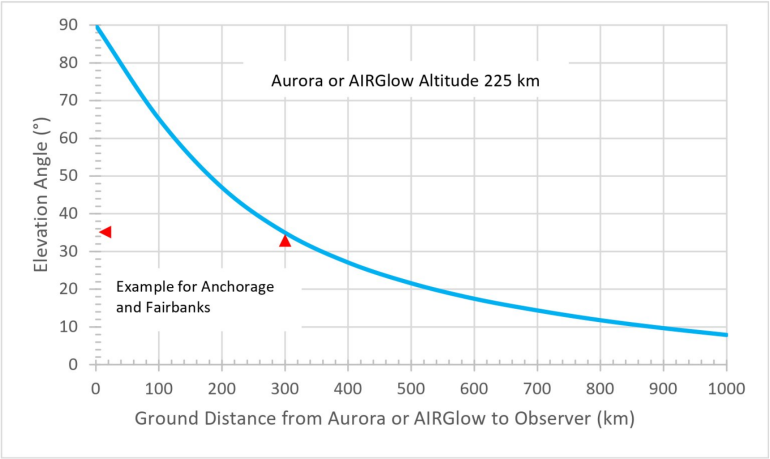
This chart shows the approximate elevation angle per distance from HAARP a person will need to be at to observe the airglow. Credit: Image courtesy HAARP
HAARP transmission frequencies will vary but will occur between 2.8 and 10 megahertz. Actual transmit days and times are highly variable based on real-time ionospheric and/or geomagnetic conditions.
Additional information about the research campaign will be available on the HAARP website.
The National Science Foundation in 2021 awarded the UAF Geophysical Institute a five-year, $9.3 million grant to establish the Subauroral Geophysical Observatory at HAARP. The observatory explores Earth’s upper atmosphere and geospace environment.
The grant has supported several HAARP research campaigns, including this one. It also helped fund the return to HAARP of the Polar Aeronomy and Radio Science Summer School, which hosted more than 50 researchers in August.
The Air Force originally developed and owned HAARP but transferred the research instruments to UAF in August 2015. UAF operates the site under an agreement with the Air Force.
Pilots flying in the Gulkana area are asked to check with the Federal Aviation Administration for temporary flight restriction details.

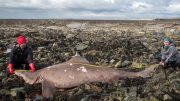




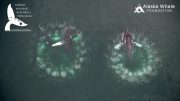

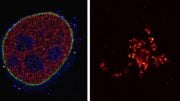
Be the first to comment on "Alaskan Nights Aglow: Don’t Miss HAARP’s Spectacular Artificial Airglow Show"